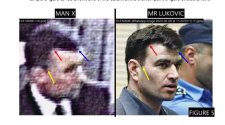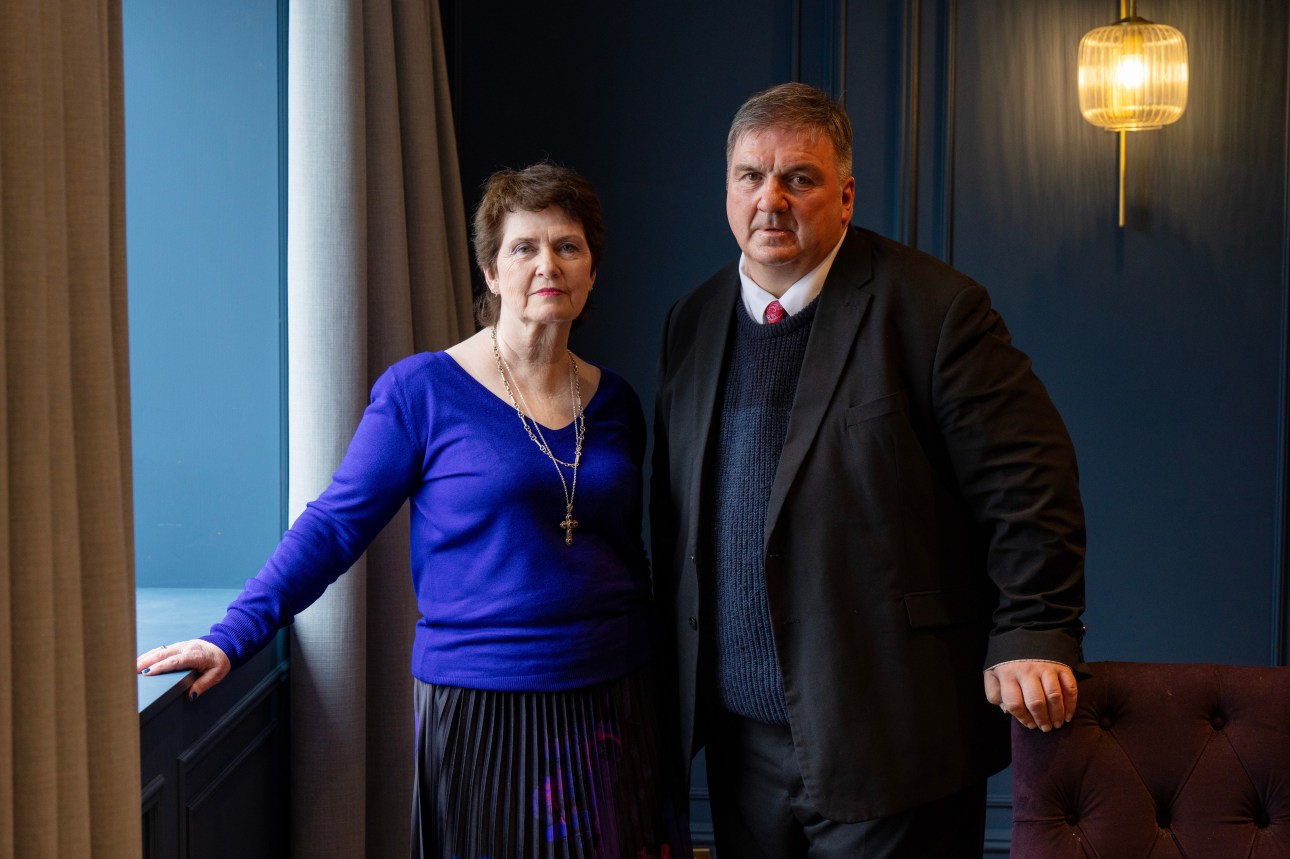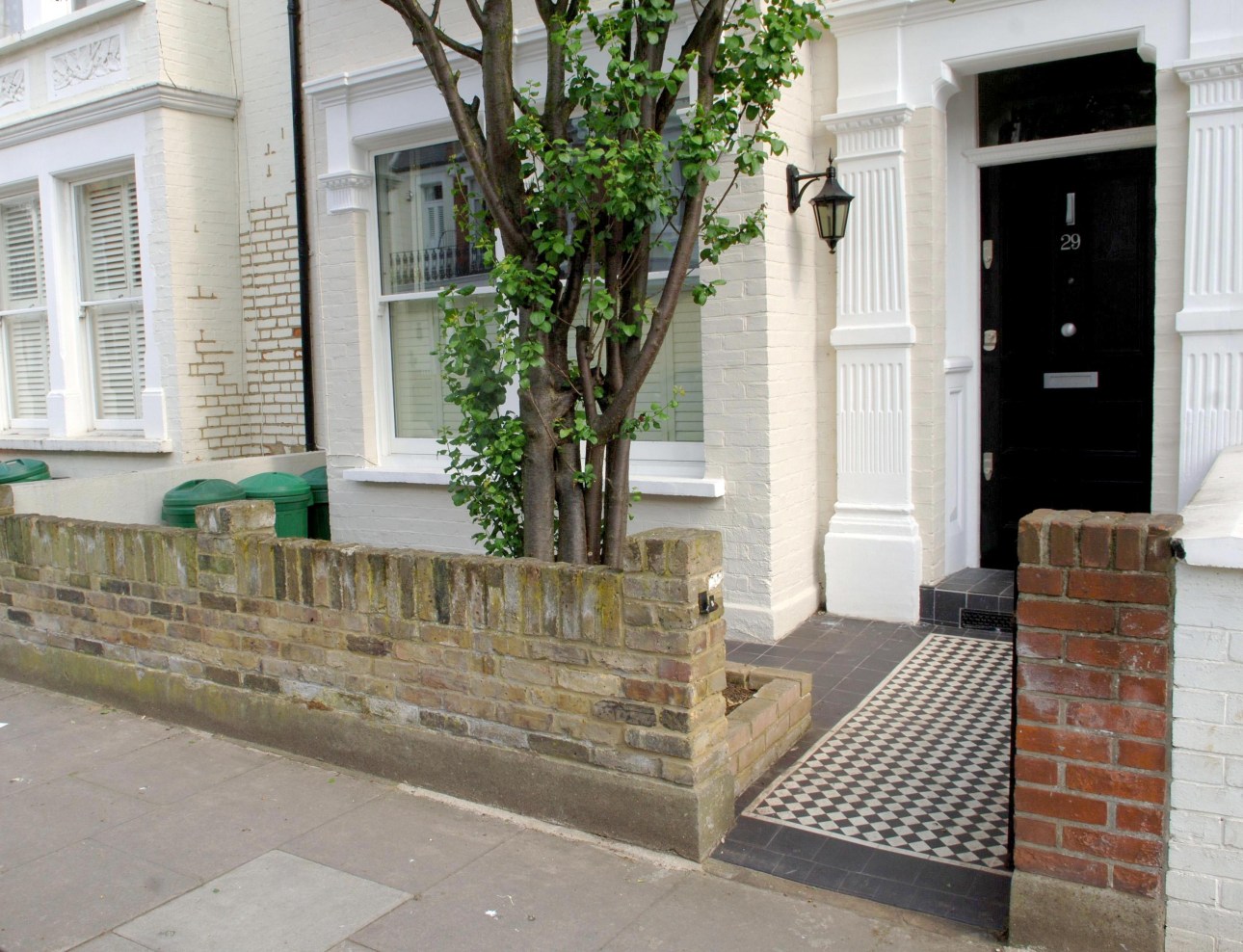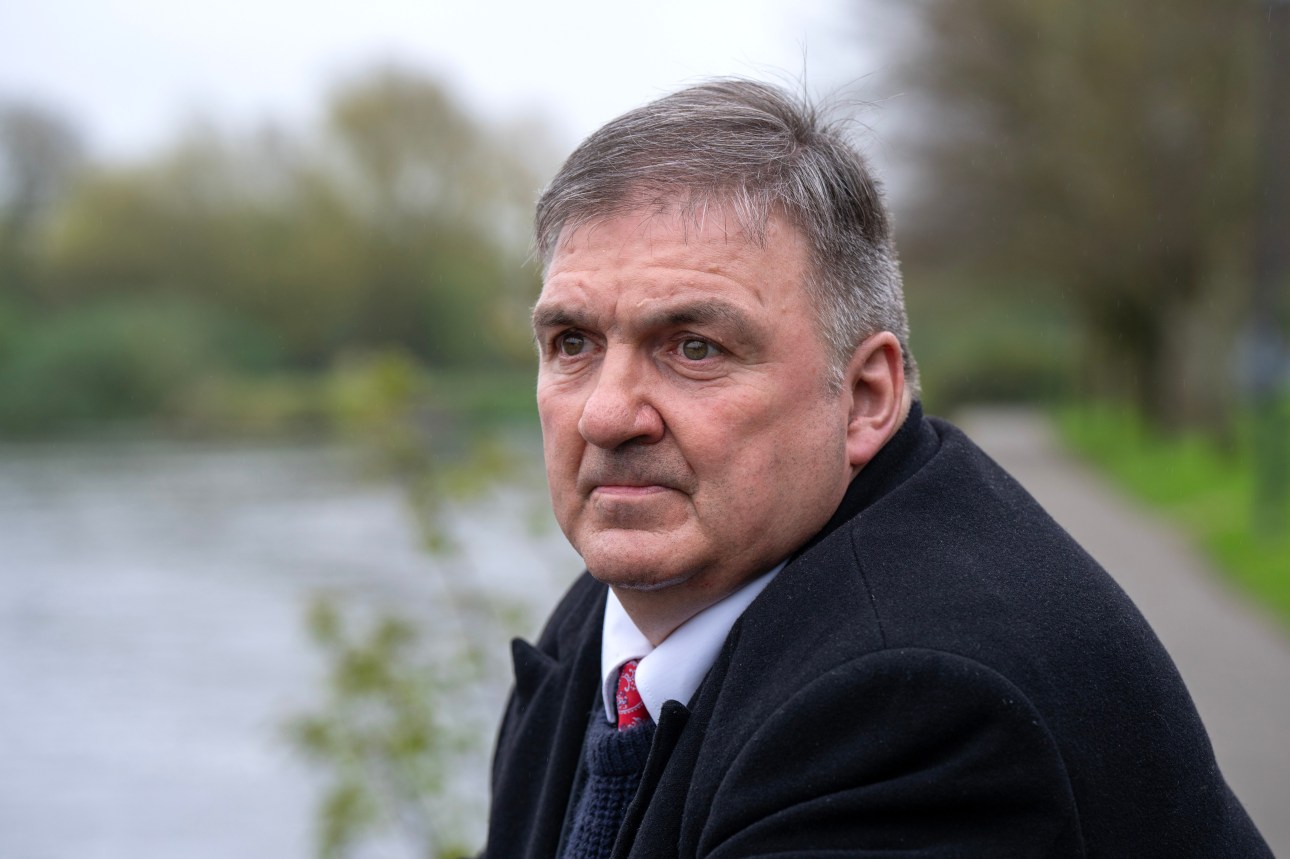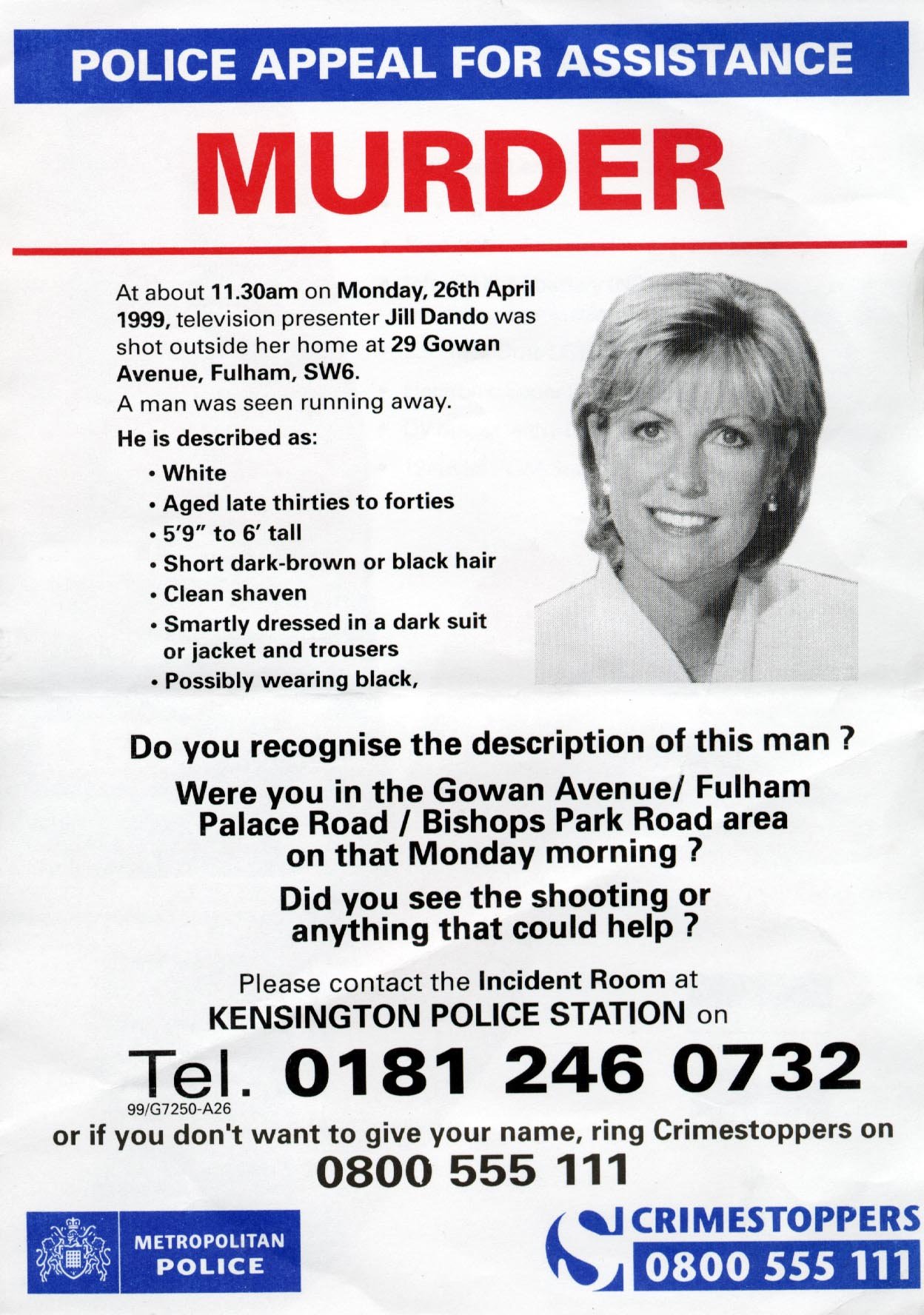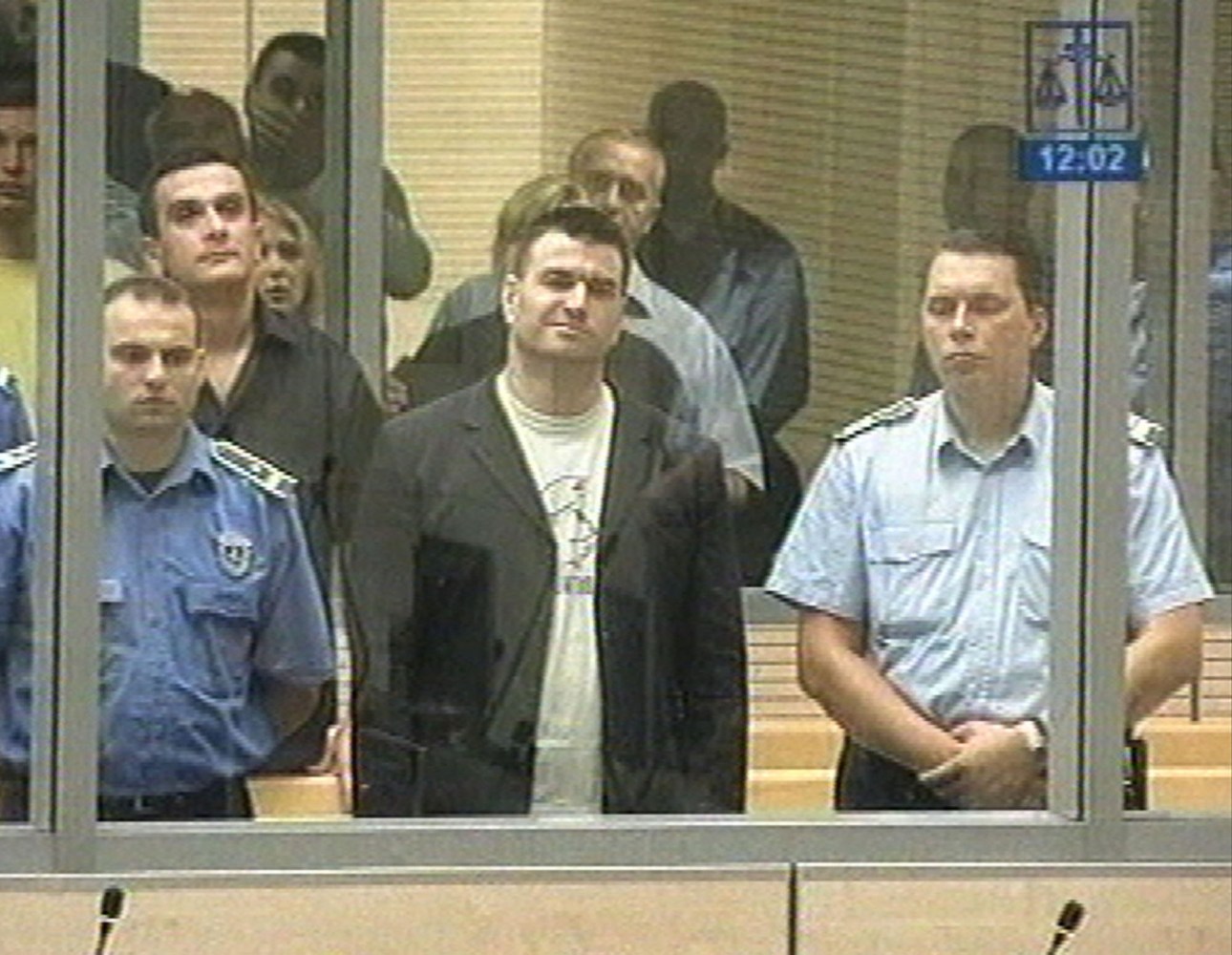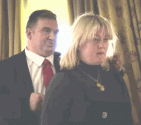Richard Hughes said in the court trial in 2001 that she would often come back to her house on a Monday so there was a relative pattern there if not clockwork to pick up post and do some admin.
If you watch the Crimewatch from May 1999 there were loads of sightings from builders, postman and a traffic warden of a couple of well dressed people hovering around her property on the morning of April 29th in Gowan Avenue so don't think it was a case of a random passer by just seeing her get out of her car and deciding to murder her there and then, area was quietly being stalked out.
Been to that part of London many times but never actually walked down Gowan Avenue so no idea how busy or not it is at 11am on a weekday morning. Does seem incredible to me the killer could just jog down the street and fade into general life but of course in 1999 CCTV wasn't as advanced as it is today. You'd have thought the police would've done checks on everyone passing into range in the nearest cameras around the area in the hours after unless it was just too grainy?
Nearly two years since I posted this. Seems this thread moved on considerably with the recent Netflix documentary series.
Anyway I went to a Fulham match two months ago so noting it's ten minutes walk to the ground from there I got off at Fulham Broadway tube and found 29 Gowan Avenue....
Of course over two decades had passed and from reading this thread seems Jill's house had a tree and a hedge. Neither were there anymore so the patio and door were very visible from the other side of the road which may not have been as apparent in 1999 (given the 10 minute delay between the shooting and Helen Doble dialling 999).
Jill's house was very close to a busy main road. Munster Road a typical London cut through. A primary school across the road which would've been there in 1999. From what I remember there were shops aswell right by entrance to Gowan Avenue (which possibly may not have been there in 1999).
I visited at 2.15pm on a Saturday afternoon so ultimately that's a different experience to half 11 on a Monday morning. From looking at the house I would conclude someone could linger around if they kept moving about rather than just standing in a fixed spot.
It's very possible someone could've been across Munster Road looking towards 29 Gowan Avenue, seen a car pulled up and park right outside, cross the road, cross Gowan Avenue and catch up with Jill Dando just as she was opening the gate.
Feels more credible to me than someone standing right outside her house as it's an incredibly tight and narrow space and she'd have noted the individual's presence as soon as she got out of the car. She clearly didn't feel in any danger actually getting out of the car so clearly didn't note anyone of significance in her eyeline at that point.
It was quite interesting visiting the actual scene to get a bit more perspective of it compared to just watching endless footage. The road I actually live on is far wider and there's an alleyway across the street that leads to a little pond area so hypothetically someone could commit a murder round here (hopefully not) and then in 5 minutes be the other side of the estate and not really be seen/linked to the scene.
This is a very typical boxed in London residential street. Very tight. If you were walking down or up the street as same time as the killer was leaving the scene you wouldn't be able to avoid them on the pavement, someone would have to step into the road. Same as you'd have to be driving pretty slowly turning into Munster avenue so no more than 20mph and probably less with the parked cars.
I walked down Gowan Avenue and within 2 minutes you come to another junction. Can do a loop and end up walking up another street up to Munster Road again so possible some sort of escape vehicle was there. More a ten minute walk to get down to Bishop's Park. If the killer did dispose of the weapon in the Thames then they'd have been in the vicinity of the area for a good twenty minutes.
So that's all I can really add. If I had to decide either way I've always leaned on professional hit but who/why not sure. Don't think it was Crimewatch link. She did that for years and nothing. She did the Kosovo appeal and was dead within two weeks....
With Barry George the issue I always have is he goes in the disability centre at 11.50am according to the above timeline and starts requesting alibi assurance. This was 1999. How on earth did he know something had happened to Jill Dando at that point? The newsflash on BBC wasn't until 2pm I think? (Going on the archive footage it wasn't included in the main lunchtime bulletin). It would've been cleverer of George to go into the centre in the afternoon as then he could've just said he'd seen the media reports given his lack of employment. Or just gone in the morning and not mentioned it.
What did he know at that time compared to everyone else? This incident didn't happen in a big open space where a crowd could gather and start gossiping. Jill Dando wasn't discovered for another 10 minutes after the stabbing so only a few people knew at that point her fate. The killer, neighbours on that street and seemingly Barry George if he's asking for an alibi approx 10 minutes later. The Dando family hadn't been informed at that point.
Just one of those cases where everyone interested will still be speculating in 25 years time sadly.
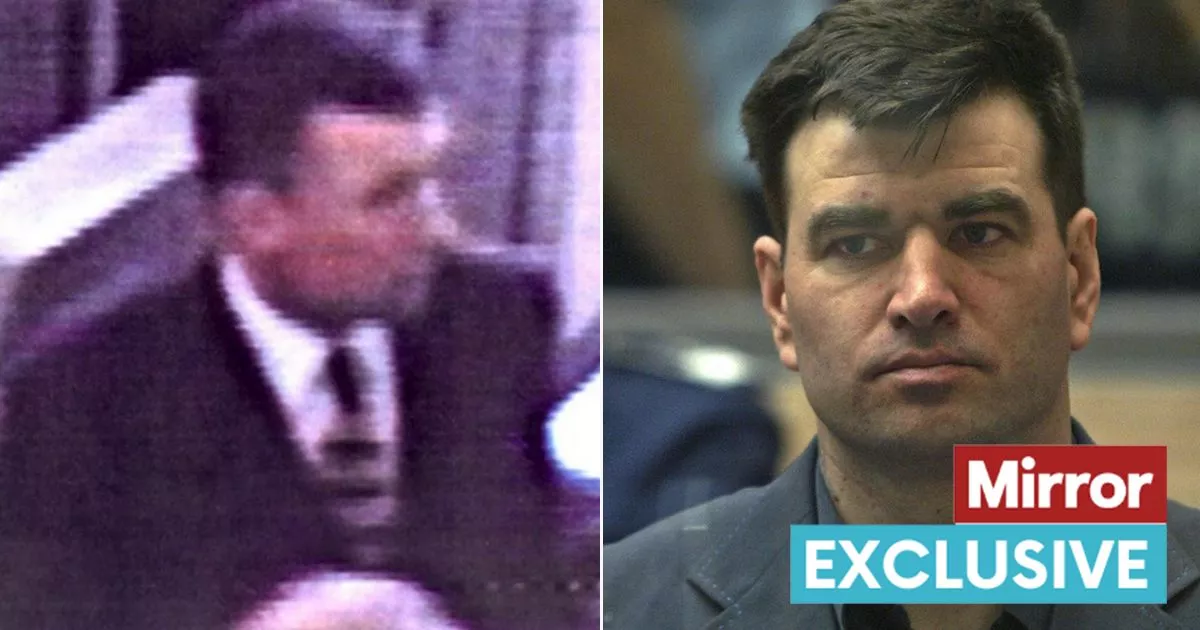
 www.mirror.co.uk
www.mirror.co.uk
